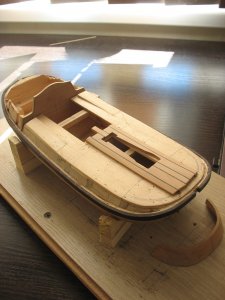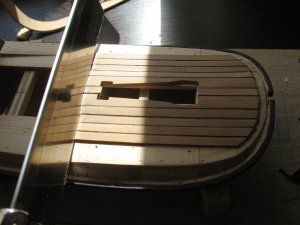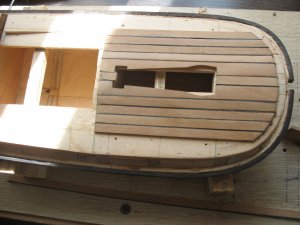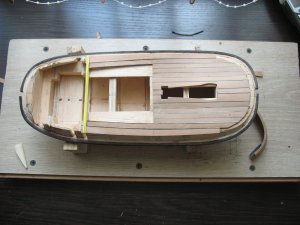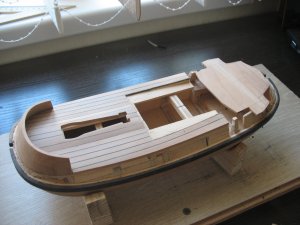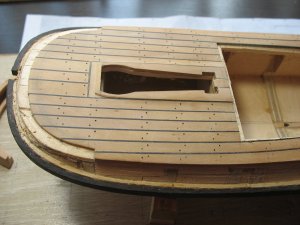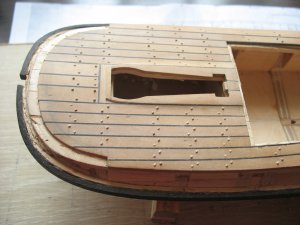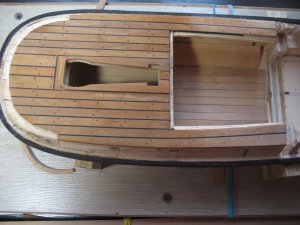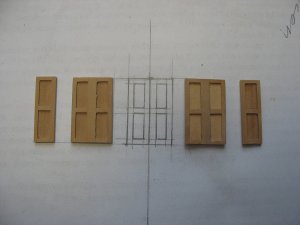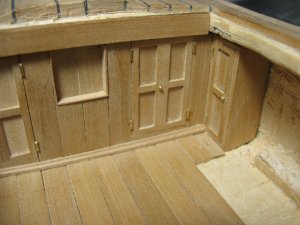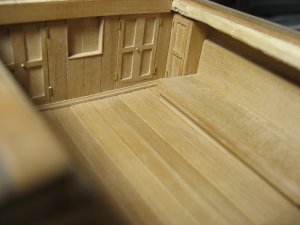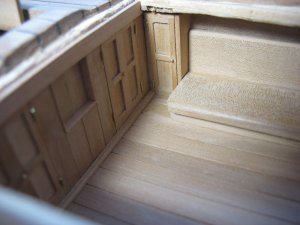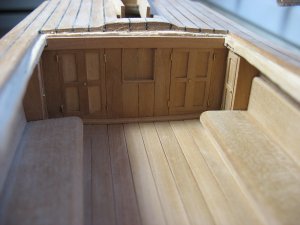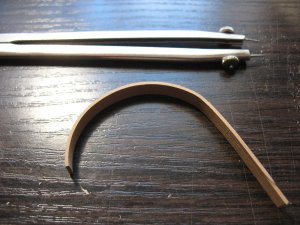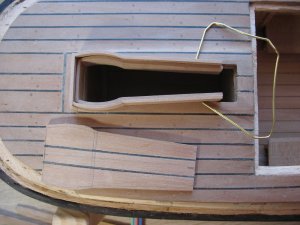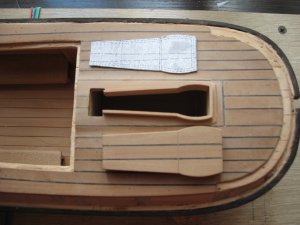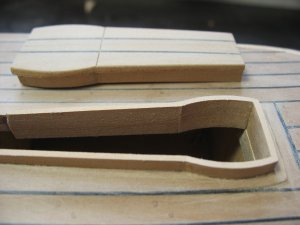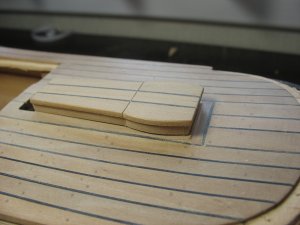It is a pleasure to follow your build. Great workmanship!
-

Win a Free Custom Engraved Brass Coin!!!
As a way to introduce our brass coins to the community, we will raffle off a free coin during the month of August. Follow link ABOVE for instructions for entering.
-

PRE-ORDER SHIPS IN SCALE TODAY!
The beloved Ships in Scale Magazine is back and charting a new course for 2026!
Discover new skills, new techniques, and new inspirations in every issue.
NOTE THAT OUR FIRST ISSUE WILL BE JAN/FEB 2026
You are using an out of date browser. It may not display this or other websites correctly.
You should upgrade or use an alternative browser.
You should upgrade or use an alternative browser.
Friech Boeir Yacht "SPERWER" by Kortes -1:30 scale [COMPLETED BUILD]
- Thread starter Kortes
- Start date
- Watchers 28
-
- Tags
- completed build
Thank you, Jim, for such warm words.
Beautiful work! One can tell there are years of experience behind those shaped planks. I'd like to one day see how you do the steaming and shaping  What did you use for caulking between the planks?
What did you use for caulking between the planks?
Best regards
Ron
Best regards
Ron
Beautiful work! One can tell there are years of experience behind those shaped planks. I'd like to one day see how you do the steaming and shapingWhat did you use for caulking between the planks?
@Kortes Translation into Russian about questions from @ron0909: Замечательная работа! Предполагаю, что у вас за плечами многолетний опыт. Я бы хотел научиться однажды, загибать планки используя пар. И еще, чем ты пользуешься для имитации швов палубного настила?
Thank you, my dear friend Jim .
Dear Ron.
I came to the conclusion that one can't work without a pattern when bending. I make a template,
fasten it on the board, then, I steam up the workpiece in the tip of the boiling
kettle. I take it out and with the help of a wedge I press one end of the workpiece to the template,
after that, I bring the workpiece with template to the tip of the boiling kettle and warming up the workpiece over a stream of steam, with little effort,
I start pressing the workpiece to the template profile, often fixing it with wedges to
the template, and going on so until reaching the end of the template.
So as not to burn hands, the workpiece must me longer than the template.
It's going to work out this way. I was amazed by how bending the wood becomes under the stream of steam. I had to buy an ordinary classic kettle for that. )
)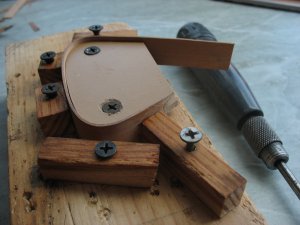
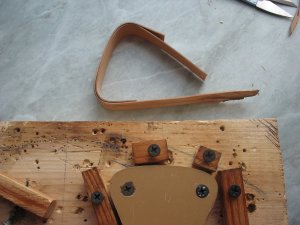
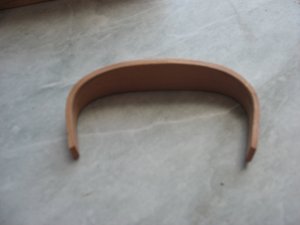
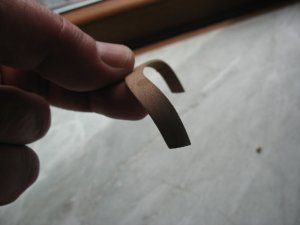
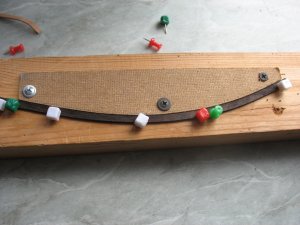
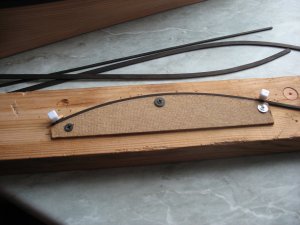
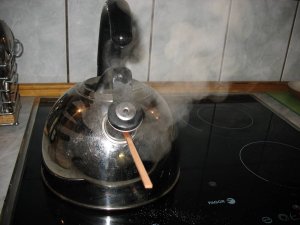
I came to the conclusion that one can't work without a pattern when bending. I make a template,
fasten it on the board, then, I steam up the workpiece in the tip of the boiling
kettle. I take it out and with the help of a wedge I press one end of the workpiece to the template,
after that, I bring the workpiece with template to the tip of the boiling kettle and warming up the workpiece over a stream of steam, with little effort,
I start pressing the workpiece to the template profile, often fixing it with wedges to
the template, and going on so until reaching the end of the template.
So as not to burn hands, the workpiece must me longer than the template.
It's going to work out this way. I was amazed by how bending the wood becomes under the stream of steam. I had to buy an ordinary classic kettle for that.







I used plastic film for calking. I used this method when i was building "Carolina". All that one needs for this can be found in any stationary shop.
Plastic bag for paper (they can be found in different colors and thickness) and two sides adhesive duct tape. I
use the balck side of the plastic bag. I put the duct tape on plastic fim and cut it in stripes according to the thickness of the batten,
it can be made with a small margin, then I separate
protective paper from the strip and stick on the end of the batten, the allowances are cut off with the knife, - it's cutting off nicely.
Here are several photos, maybe they can be of use to somebody. If you have any questions - it would be my pleasure to help.
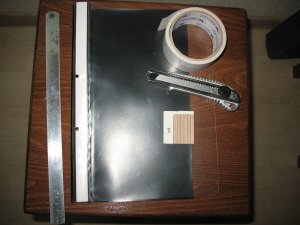
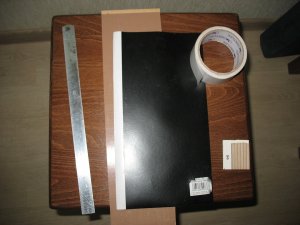
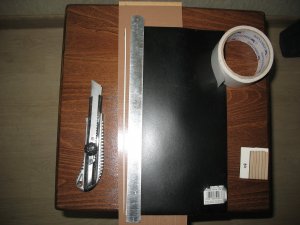
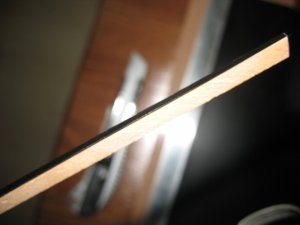
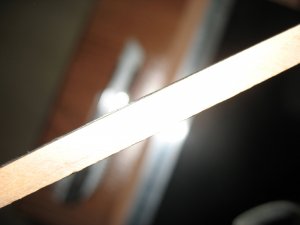
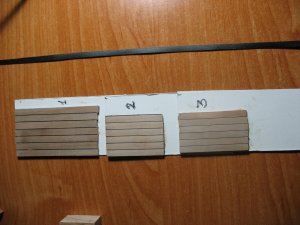
Plastic bag for paper (they can be found in different colors and thickness) and two sides adhesive duct tape. I
use the balck side of the plastic bag. I put the duct tape on plastic fim and cut it in stripes according to the thickness of the batten,
it can be made with a small margin, then I separate
protective paper from the strip and stick on the end of the batten, the allowances are cut off with the knife, - it's cutting off nicely.
Here are several photos, maybe they can be of use to somebody. If you have any questions - it would be my pleasure to help.






Kortes, thank you for your detailed explanations and photos! It takes a lot of effort to pass on the knowledge and I'm sure I won't be the only one here to appreciate it  Jim, thank you for your help!
Jim, thank you for your help!
Kortes, your methods are inspiring and definitely *not* the 'lazy man's'. I think the initial effort of creating the forms has paid off so well! I can see a collection of forms growing in a box as specific shapes can always be re-used on other projects. I am going to attack a specific problem almost exactly as you have shown in your photos so I can finally move on with my own project. Using the plastic from the folders worked so well for the caulking A much better purpose than they were originally intended for!
A much better purpose than they were originally intended for!
Ron
Kortes, your methods are inspiring and definitely *not* the 'lazy man's'. I think the initial effort of creating the forms has paid off so well! I can see a collection of forms growing in a box as specific shapes can always be re-used on other projects. I am going to attack a specific problem almost exactly as you have shown in your photos so I can finally move on with my own project. Using the plastic from the folders worked so well for the caulking
Ron
@ron0909 Russian translation for @Kortes
Александр, ваши методы изготовления вдохновляют, и вы определенно не «ленивый человек». Я думаю, что изготовление таких приспособлений\шаблонов себя оправдало сполна! Я вижу коллекцию шаблонов, растущих в ящике, поскольку конкретные формы всегда могут быть повторно использованы в других проектах. Я воспользуюсь этим методом почти так же, как вы показали на своих фотографиях, чтобы я мог, наконец, перейти к моему собственному проекту. Использование пластиковых пластин из папок, для создания имитации конопатки гораздо лучшее применение, чем dля иx изначального применения.
Александр, ваши методы изготовления вдохновляют, и вы определенно не «ленивый человек». Я думаю, что изготовление таких приспособлений\шаблонов себя оправдало сполна! Я вижу коллекцию шаблонов, растущих в ящике, поскольку конкретные формы всегда могут быть повторно использованы в других проектах. Я воспользуюсь этим методом почти так же, как вы показали на своих фотографиях, чтобы я мог, наконец, перейти к моему собственному проекту. Использование пластиковых пластин из папок, для создания имитации конопатки гораздо лучшее применение, чем dля иx изначального применения.
Hi Alexander,
A beautiful build. Correctly spelled it is a Friese Boeier. There are still a lot on the Dutch waterways as sailing yacht. See below a link to a Dutch website showings some of these vessel for sale. You can see a lot of details here for reference.
Hope it helps. Ps really love your carved planking.
https://www.heechbydemar.com/sale/list-of-sales
This is also an interesting site, sorry all in Dutch but a lot of the Russian nautical terms are in Dutch so hopefully that will help and otherwise google translate will. .
.
https://www.ssrp.nl/stamboek/scheepstypes/boeiers/boeier
A beautiful build. Correctly spelled it is a Friese Boeier. There are still a lot on the Dutch waterways as sailing yacht. See below a link to a Dutch website showings some of these vessel for sale. You can see a lot of details here for reference.
Hope it helps. Ps really love your carved planking.
https://www.heechbydemar.com/sale/list-of-sales
This is also an interesting site, sorry all in Dutch but a lot of the Russian nautical terms are in Dutch so hopefully that will help and otherwise google translate will.
https://www.ssrp.nl/stamboek/scheepstypes/boeiers/boeier
Thank you very much, Ron.
I think that all the people who are involved in our hobby are not "the lazy ones".
Regarding the collection of templates, I should note that they are definitely adding up in the box,
but unfortunately, they are rarely reused.
Each template is being made for a specific element. But it's the price one have to pay for the quality.
My best regards, Alexander
I think that all the people who are involved in our hobby are not "the lazy ones".
Regarding the collection of templates, I should note that they are definitely adding up in the box,
but unfortunately, they are rarely reused.
Each template is being made for a specific element. But it's the price one have to pay for the quality.
My best regards, Alexander
My greetings, Bac Maarten,
Thank you so much for your attention to my work and your help. Those sites are very valuable and helpful. I have used some
of them in my work. I completely agree with you, dutch terminology has been the basis of russian maritime vocabulary
since the times of Peter the First. And rhe language of plans is universal and international.
It's a pleasure for me and helpful for my work to communicate with a resident of Holland. There are lots of specific
questions, that could be more easily answered by the representative of the Dutch school of shipmodelling. If it wouldn't
be a trouble, I hope for your help
My best regards, Alexander
Thank you so much for your attention to my work and your help. Those sites are very valuable and helpful. I have used some
of them in my work. I completely agree with you, dutch terminology has been the basis of russian maritime vocabulary
since the times of Peter the First. And rhe language of plans is universal and international.
It's a pleasure for me and helpful for my work to communicate with a resident of Holland. There are lots of specific
questions, that could be more easily answered by the representative of the Dutch school of shipmodelling. If it wouldn't
be a trouble, I hope for your help
My best regards, Alexander
I am positive surprised how good (in this scale) the "plastic" caulking is looking.
Many thanks for the hint.
It is very good looking model - Great workmanship
Many thanks for the hint.
It is very good looking model - Great workmanship

Hi alexander,
As Uwe already said, this caulking is fantastic, I think I give it a try on my Royal caroline.
If you need anything specific on the boeier please let me know.
The oroginal Sperwer that you are building is based in the Zuiderzee museum in Enkhuizen . If you need something I can contact them for you.
I found also this drawing of the Sperwer, don't know if you already got it.

As Uwe already said, this caulking is fantastic, I think I give it a try on my Royal caroline.
If you need anything specific on the boeier please let me know.
The oroginal Sperwer that you are building is based in the Zuiderzee museum in Enkhuizen . If you need something I can contact them for you.
I found also this drawing of the Sperwer, don't know if you already got it.

I am positive surprised how good (in this scale) the "plastic" caulking is looking.
Many thanks for the hint.
It is very good looking model - Great workmanship
I'm very glad you found my working experience interesting.



